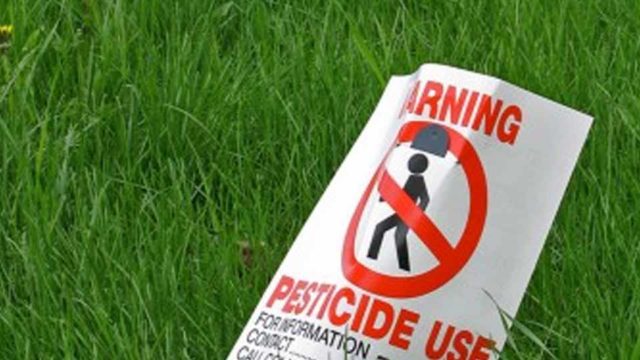Pesticides allowed for use in Canada are designed to kill plants deemed “pests.” But they can also impact the health of humans and other organisms, including birds, fish, wildlife, pets and non-target plants.
The question for society to answer is: what level of risk is justified?
When the benefits are significant — for example, when applying a pesticide to protect public health or control an invasive species — it makes sense to accept a level of risk. When the benefits are insignificant — the ease with which one can obtain an aesthetically pleasing lawn or garden — the serious risks associated with using certain products are simply unjustifiable.
And make no mistake, the risks associated with some pesticides are serious.
These risks are borne disproportionately by children and animals. Exposure to certain pesticides is associated with fetal growth outcomes, including lowered birth rates and birth defects, as well as adverse neurodevelopmental and behavioural health outcomes from birth to adolescence. Exposure to pesticides has also been linked to increased rates of several types of cancer and the development of respiratory problems such as asthma.
Adverse health effects flowing from exposure to pesticides often take a long time to materialize, making it impossible in most circumstances to link a given illness to pesticide exposure. But that does not make the harm any less real. And this is to say nothing of the serious environmental effects of pesticides when they enter the air, soil and water in our communities.
This is why there is a growing, science-based trend toward cosmetic pesticide bans across Canada. Since the early 2000s, approximately 200 cosmetic pesticide ban bylaws have been enacted by municipalities across the country.
Only two Canadian provinces — British Columbia and Saskatchewan — are without laws banning or restricting the use and sale of pesticides for cosmetic purposes.
Despite a well-funded campaign from the pesticide industry group CropLife, Manitoba took an important step in 2014 when it amended its laws to restrict cosmetic uses of certain pesticides. Manitoba’s cosmetic pesticide law is by no means the strongest — for example, it is narrow in scope and does not apply to gardens — but it was an important turning point in protecting the health of Manitobans and the environment from unnecessary exposure to pesticides applied for purely cosmetic purposes.
Other provinces have seen significant reductions in pesticides in the environment following the enactment of cosmetic pesticide bans.
For example, water samples examined in Ontario found reductions of more than 80 per cent for several common active ingredients of cosmetic pesticides after the province’s pesticide ban came into effect in 2009. Pesticide use in the City of Toronto declined by approximately 57 per cent after the city’s ban in 2004. In Manitoba, we have not yet had a chance to measure the results of the new law because the grace period for compliance ended only this past winter.
In response to municipalities’ concerns weed control is more expensive because of the ban and Manitoba communities are “a little less attractive than they were in the past,” the new minister of sustainable development has expressed a willingness to review the province’s pesticide legislation. This would be a step in the wrong direction.
Municipalities in other jurisdictions with pesticide bans have managed to survive and thrive using safer alternatives. Furthermore, emphasis on municipal costs associated with using safer alternatives overlooks the cost savings associated with pesticide bans resulting in benefits to health care, ecology, and hazardous-waste management. Now is not the time to abandon Manitoba’s cosmetic pesticides restrictions. Rather, it’s time to examine the law’s results to date and continue to improve its effectiveness.
I grew up in Winnipeg and now live in Ontario, where the use of cosmetic pesticides is banned.
When my son comes home with mud and grass stains all over him, I know he’s been having fun outdoors, and has probably been in contact with things I don’t want to know about — life with a three-year-old can be gross. However, I can rest easier as a parent knowing the lawns and parks he’s playing in have not been sprayed with pesticides that could hinder his neurological development or contribute to serious illness down the road.
Parents in Manitoba deserve the same peace of mind.
This piece first appeared in the Winnipeg Free Press on June 27, 2016.



